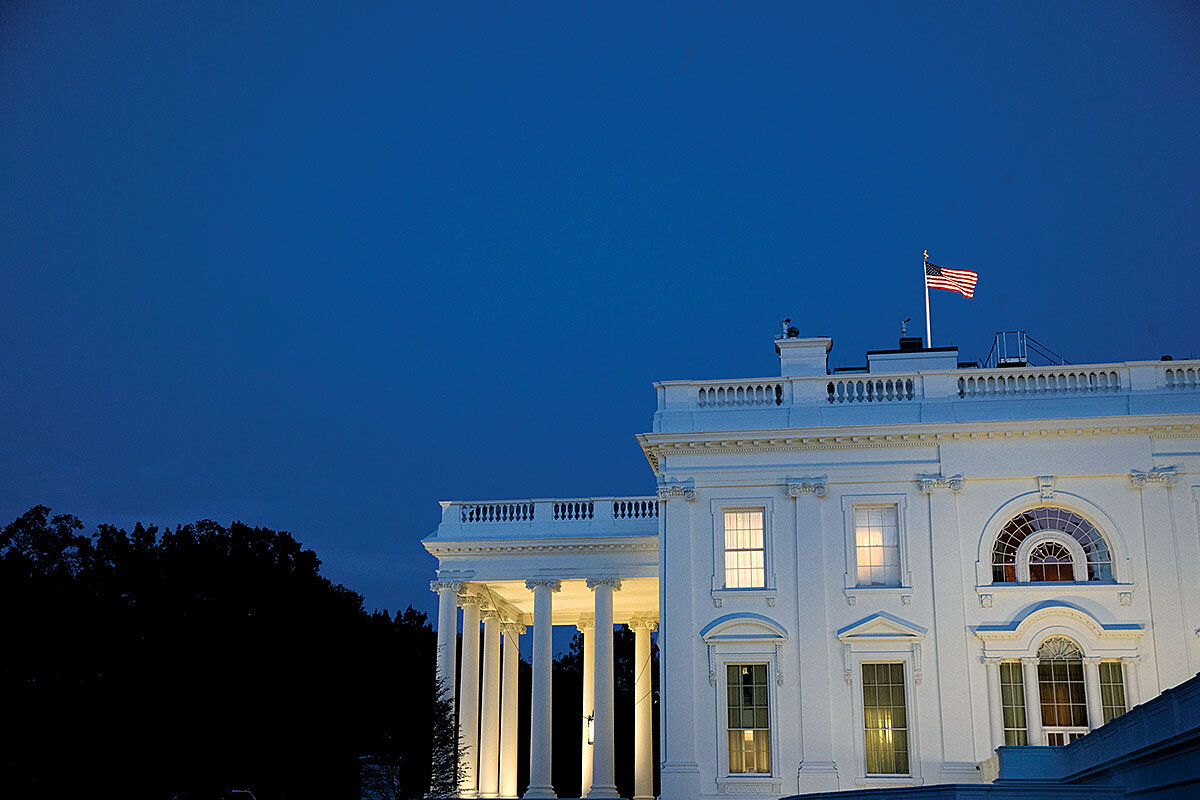The 25th Amendment: Three questions about a tool to oust presidents
Loading...
When President Donald Trump tweeted in October about his ‚Äúgreat and unmatched wisdom,‚ÄĚ and released a widely ridiculed letter he wrote to Recep Tayyip Erdońüan ‚Äď in which he urged the Turkish president, ‚ÄúDon‚Äôt be a fool!‚ÄĚ ‚Äď his critics disagreed not just with policy.
While the president‚Äôs supporters say this is ‚ÄúTrump being Trump,‚ÄĚ the most aggressive critics argue it is evidence that he is without sufficient mental capacity to carry out the duties of his office. That, some say, calls for his removal under the Constitution‚Äôs 25th Amendment.
But regardless of whether one agrees, or instead sees such criticism as part of a relentless attack on the president, the 25th Amendment is actually a dead end. For while social media may be atwitter about the amendment‚Äôs ability to involuntarily remove the president if he is ‚Äúunable to discharge the powers and duties of the office,‚ÄĚ it‚Äôs never been invoked, and it most likely won‚Äôt be. Here‚Äôs why.
Why We Wrote This
As Donald Trump breaches norms in more extreme ways, some critics are calling for the use of the amendment to remove a president who is ‚Äúunable to discharge [his] powers and duties.‚ÄĚ But that option is misleading.
What is the 25th Amendment?
To understand why the amendment is not going to be used to remove Mr. Trump from office, it helps to know what spurred its creation: the assassination of President John F. Kennedy.
‚ÄúThe people in Congress, people who were shaken by this terrible event, wondered what would have happened if, having sustained a terrible head injury, he had nevertheless survived,‚ÄĚ says Philip Bobbitt, director of the Center for National Security Law at Columbia Law School and professor at the University of Texas School of Law. ‚ÄúThat happened to James Garfield.‚ÄĚ
The amendment, ratified in 1967, is made up of four sections. The first basically restates the Constitution; the vice president will become president if the president resigns or dies. The next section empowers the president to nominate a new vice president should the office become vacant.
Section 3 allows the president to deem himself temporarily incapacitated, voluntarily transfer his powers to the vice president, and reassume them at will. And it is Section 4 that enables a president‚Äôs involuntary removal if he is ‚Äúunable to discharge the powers and duties of the office.‚ÄĚ
How would removal of a president work?
It would have to begin with some of the president‚Äôs closest advisers: the vice president and a majority of the Cabinet, or of some other advisory committee Congress has designated by law. They would have to alert the speaker of the House and the Senate majority leader that they deem the president ‚Äúunable.‚ÄĚ When they deliver this declaration, the vice president immediately becomes acting president.
That is, unless the president writes to the speaker and Senate leader that he is fine, which would then reinstate his powers. To settle this executive tussle, Congress is required to convene within 48 hours and vote within 21 days to determine whether the president may stay in office. A vote of removal requires a two-thirds majority in both the House and the Senate.
In contrast, impeachment only requires a simple majority in the House before a two-thirds majority in the Senate to remove.
‚ÄúHowever difficult it is to impeach someone, this is even more difficult,‚ÄĚ says Saikrishna Prakash, professor of law and Miller Center fellow at the University of Virginia.
How are these rules interpreted?
The least defined element of the amendment is the phrase ‚Äúunable to discharge the powers and duties.‚ÄĚ
From a position that considers the authors‚Äô original intent, the phrase implies some severe disability such as Woodrow Wilson‚Äôs incapacitating stroke. But a literal reading of the text could have broader meaning: ‚ÄúThe language is open-ended, but the language can quite fairly be read to encompass someone who is unfit physically, or unfit morally or psychologically, to discharge the office,‚ÄĚ says Professor Bobbitt.
But he also says just because you can take a broader interpretation, that doesn‚Äôt mean it‚Äôs the best path. ‚ÄúI think the fact that the historical background of the amendment does not contemplate matters of character ... makes it not the right vehicle,‚ÄĚ he says. ‚ÄúIf you‚Äôre going to do something as divisive in the country as reversing an election, then you want to have all the constitutional arrows going the same direction.‚ÄĚ
Whatever the interpretation, it only matters if Cabinet members decide to publicly question the president’s ability.
‚ÄúThere‚Äôs the question of what all this means, and there‚Äôs the question of how likely this is to be invoked by the president‚Äôs allies,‚ÄĚ Professor Prakash says. ‚ÄúI think it‚Äôs silly to think that any of the people in the Cabinet or the vice president are going to pull the trigger on this.‚ÄĚ





